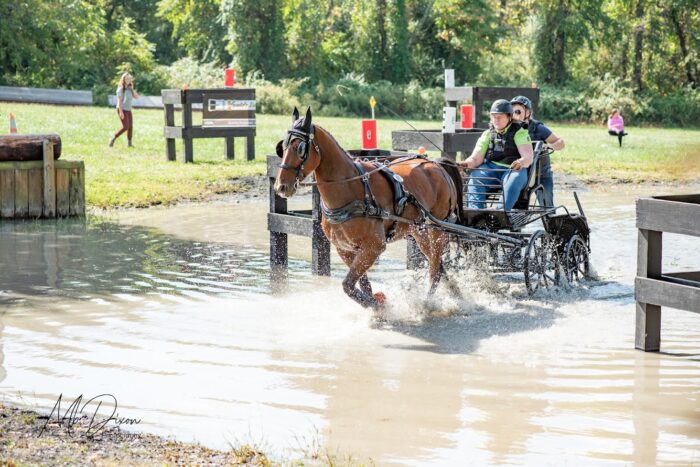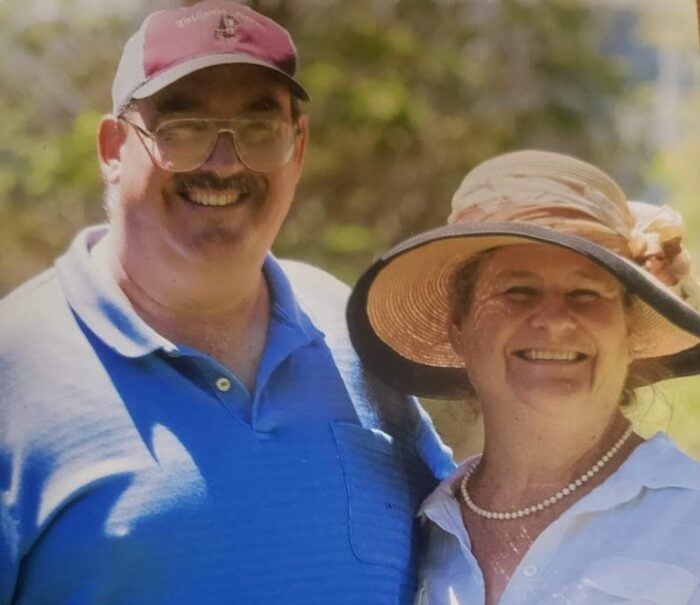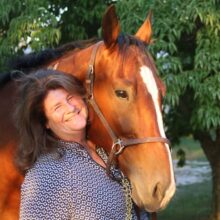By Colleen Layton
My journey with myositis has been a little more than twelve years long now! I was first diagnosed at the age of 43 with polymyositis after a six-month-to-one-year long history of falls, weakness, and joint/muscle pain. My most telling symptom: I was unable to properly ride a bike, when I had no previous difficulty. The bike just kept flopping over when I tried to pedal it!
I was very fortunate to find a practitioner who ordered a CK level early in my journey, which was followed almost immediately by a muscle biopsy that resulted in a diagnosis of polymyositis. I was referred to a rheumatologist who ordered an ANA panel, and it was discovered that I had the anti-SRP antibody. This changed my diagnosis to immune mediated necrotizing myopathy (IMNM).
At that point I was being treated with prednisone and azathioprine, but the medications began to fail, and I was referred to the Myositis Center at Johns Hopkins. There my medication was changed to CellCept, which has been somewhat of a miracle drug for me! I also receive a lot of benefit from continued physical therapy and staying as physically active as possible.
My original rheumatologist has since retired, and I continue to receive care at JHU. My biggest triggers for flares these days are bad weather, bad dietary practices, stress, illness, and fatigue. I have learned to gracefully accept help—even to ask for it—and to use assistive devices when I need them to avoid injury.
After my initial diagnosis, I was really discouraged. I had always been very active, but with myositis I struggled to even move or care for myself. At the time of my diagnosis, I was a nurse, mom, wife, volunteer EMT/firefighter, and avid equestrian. No longer able to ride my horse or serve my community, I started to spiral.
We were told twelve years ago that anti-SRP can be very resistant to treatment and that mortality could be very high. With more research, we now know that more and more people are living successfully with IMNM for many years after diagnosis. This has prompted me to participate in studies with both JHU and the NIH. Knowledge is power, and the more knowledge we give to physicians and scientists the more it benefits all of us.
At the 2016 TMA patient conference, we met Sue Maillard, a physical therapist from the UK. She is also an avid equestrian and was really enthusiastic about the benefit that equine assisted therapy could provide for those who live with myositis. Although I could not ride or pursue the same equestrian events I once did, I started driving a carriage and now compete in many events with my horse, Kiss. It is amazing how he has adapted his behavior to accommodate my balance and weakness issues. He is really tuned in to my disability. We have been successful in the sport of combined driving, which is very challenging for someone with myositis.

Photo © MbDixon Photography, www.mbdixonphotography.com
I try to serve as an advocate for other equestrians with physical challenges and promote accessibility within the sport by sharing my story with unaffected equestrians and officials who notice my differences. I’ve been given dispensations from the event-sanctioning organizations for adaptive equipment that makes it possible for me to compete, and I help others obtain the same assistance. At times, I even decorate my carriage or scooter with zebra accessories to represent rare diseases!
I had to stop working as a nurse in a large hospital system, which became far too taxing for me. I am now working happily in case management with a smaller homecare company. I was not ready to stop working emotionally when it became physically challenging, and I hope to continue for as long as possible.
As a person with a disability, I can also be a huge advocate for others with disabling conditions when they struggle to communicate with their insurance carriers, physicians, and care partners. I also distribute TMA’s Myositis 101 booklets to many physician offices in my work territory. A quick diagnosis has been my greatest gift in this battle, and it is my goal to give this gift to as many others as possible.
I became TMA’s New Jersey Myositis Support Group Leader in 2024, and I am really grateful for all of the members who have reached out, attended meetings, and shared their stories. We meet bimonthly via zoom and share our struggles and triumphs. The support we gain from each other has been very helpful!

I am blessed that my husband, John, has been a huge part of helping me win my myositis battle. He finds ways to help me stay active and assists The Myositis Association by participating in meetings and speaking with other care partners and volunteers at the patient conference every year. We have attended a total of seven conferences since my diagnosis and look forward to attending every year. Meeting other myositis warriors and hearing their stories really boosts my spirit and resolve to keep fighting.
Please help TMA provide the kind of support and education that was so important to Colleen and John by making a tax deductible donation now.

Thank you for sharing your journey, Colleen — that detail about the bike really stood out to me. It’s amazing how something as everyday as pedaling can become a clue to a much deeper issue. Stories like yours are so important in helping others recognize the early, often subtle signs of necrotizing myopathy.
Muchas gracias por tu experiencia , mi enfermedad es miopatía autoinmune necrotizante por estatinas y me siento muy identificado contigo, yo deje de andar y perdí 30 kg en cuestión de 4 meses , eso ocurrió en el 2023 de junio a septiembre , en el mes de noviembre me pusieron Inmunoglobulinas intravenosa 3 días al mes y empezó la mejoría al cabo de unos 20 días, de hay hasta el día de hoy donde me las pongo en casa cada semana y con vida normal , mucho animo y sobre todo gracias por concienciar de la enfermedad a la sociedad, un abrazo desde España.
Beautiful article, Colleen. You and John have dealt with this diagnosis with great courage, optimism, ingenuity, and generosity. You rock!!!
Thank you for posting it, John. Glad we got to read it!
My husband who is 77 years old was just diagnosed with necrotizing myositis. Over the last year he has been short of breath and developed progressive weakness in arms and legs. He’s still in hospital, (2 admissions since May 1) because he could not stand and now requires almost total care. Just finished acute treatment with high dose steroids, IGIV and azathioprine. Today switched to methotrexate. Might be seeing some improvement in leg strength but CK still over 400. We’re hoping and praying for remission and strength to return.